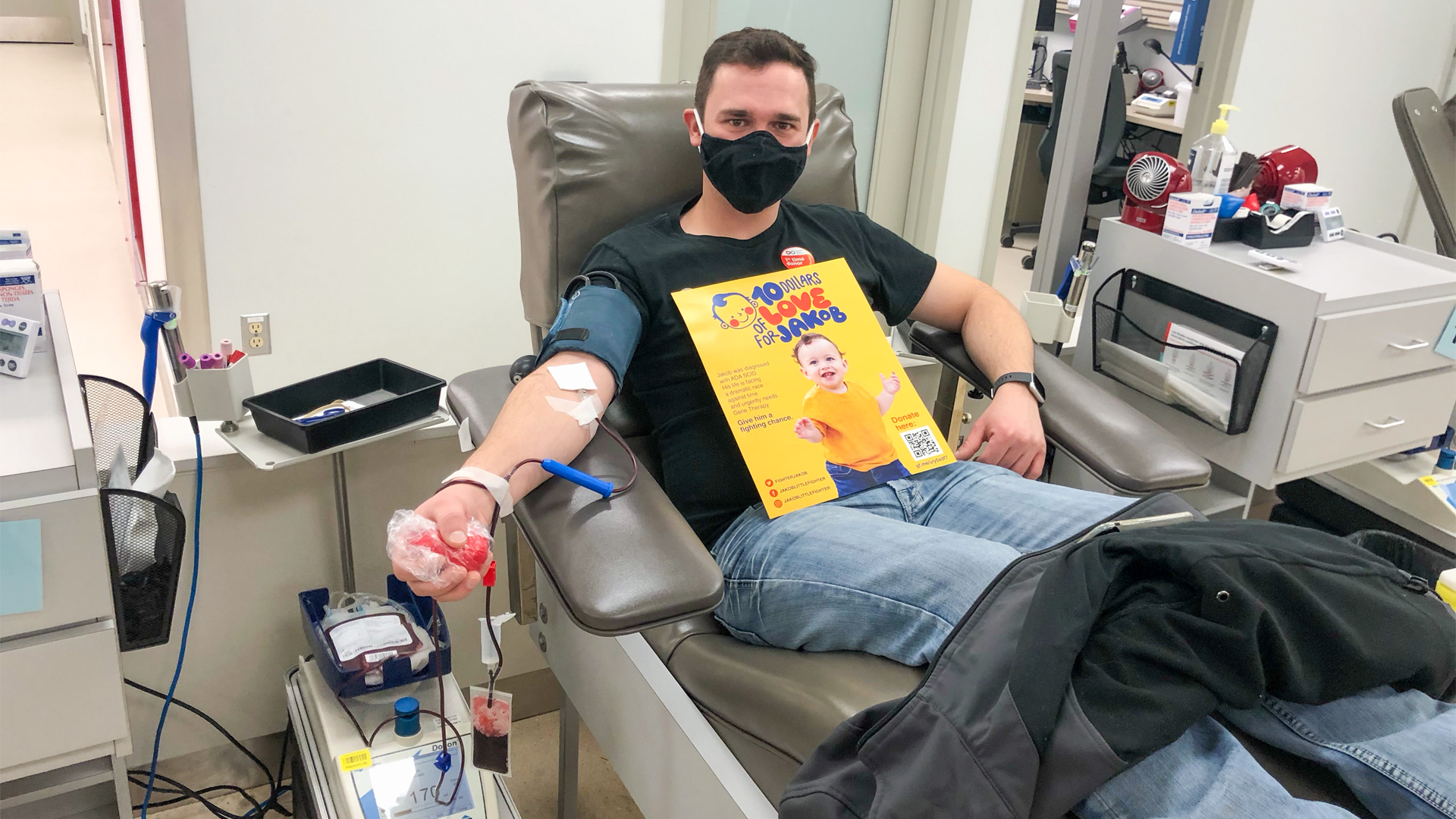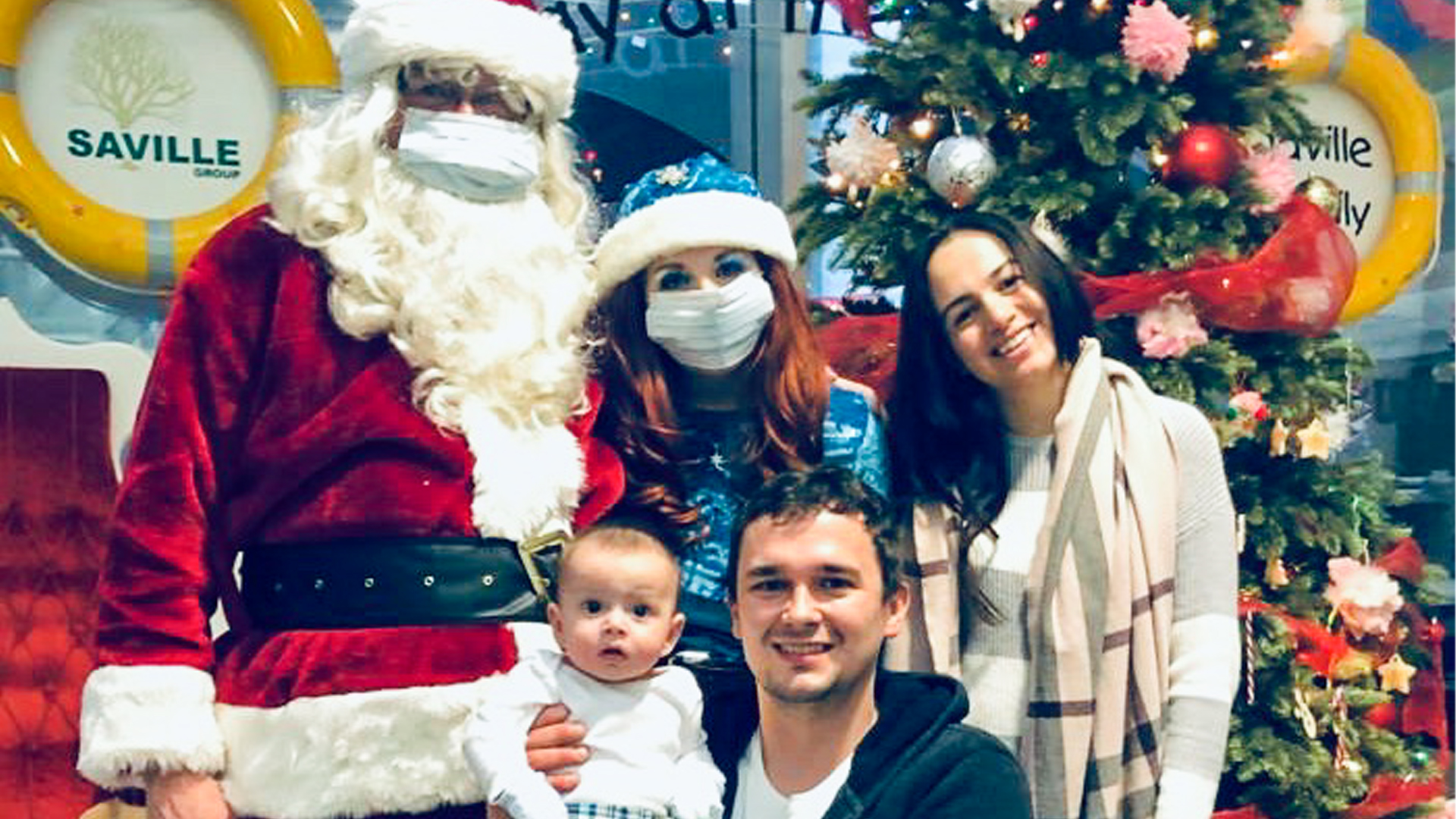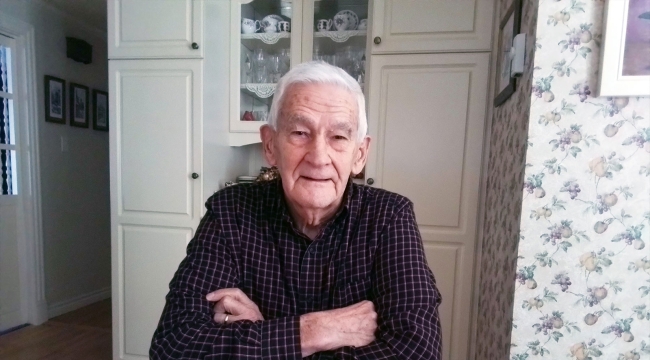Edmonton toddler with immune disorder urgently seeks stem cell transplant
Jakob Guziak was diagnosed with SCID, a rare condition that threatens the toddler’s life
An Edmonton family is making a desperate appeal for Canadians of diverse ancestral backgrounds to join Canadian Blood Services Stem Cell Registry to help save the life of their 16-month-old son.
At just a few days old, Jakob Guziak was diagnosed with adenosine deaminase severe combined immunodeficiency (ADA-SCID), a rare immune disorder caused by a deficiency in adenosine deaminase (ADA). As a result, he is unable to fight off most types of infections, including bacterial, viral and fungal infections.
Jakob currently relies on intravenous immunoglobulin (IVIG) transfusions once every month. The medication is made from plasma, a straw-coloured component of blood. However, doctors estimate that without a stem cell transplant, this treatment will only help to keep him alive for six to 12 months.
The amazing journey of donated blood

Andrea AbdulRahin and Kamil Guziak, seen here with their son Jakob Guziak and Kamil’s daughter Scarlett Guziak, are imploring Canadians from diverse ancestral backgrounds to join Canadian Blood Services Stem Cell Registry. Jakob Guziak was diagnosed with SCID and urgently needs a matching donor for a lifesaving stem cell transplant.
Jakob’s father, Kamil Guziak, a tile installer and journeyman welder, and his mother Andrea AbdulRahin, a pre-boarding officer at Edmonton International Airport, say fighting to save the life of their only son has been a huge burden on their family.
“While pregnant, a lot of people asked if I wanted a boy or a girl, and I often said that a healthy child was all I wanted,” says Andrea. “No parent is ever ready to receive a diagnosis like Jakob’s. No one prepared me to know that my life would be surrounded by hospitals, injections and beeping machines. I wasn’t
ready for this.”
Andrea remembers when Jakob’s doctor uttered the words: “He’s going to need a stem cell transplant.” Those words keep her up at night, and she’s constantly thinking about Jakob’s dire need for a matching donor.
Like Jakob, hundreds of Canadian patients require lifesaving stem cell transplants every year. They are used to treat more than 80 diseases and disorders, including blood cancers. Unfortunately, three-quarters of those patients will not find a match within their own families. To survive, they’ll turn instead to Canadian Blood Services Stem Cell Registry with its database of healthy volunteer donors and its connections with similar registries around the world.

Jakob Guziak entertains his family in his new boxing gloves. Jakob was diagnosed with SCID, a life-threatening immune disorder for which he requires a stem cell transplant.
The challenge of finding a match for Jakob
The best stem cell transplant outcomes happen when a patient's human leukocyte antigen (HLA) and the HLA of a donor are a close genetic match. Patients with Indigenous, Asian, South Asian, Hispanic, Afro-Canadian, and mixed-race backgrounds find it especially challenging to find a match, because currently, only 32 per cent of prospective donors in Canadian Blood Services Stem Cell Registry are from these diverse groups.
Jakob’s father is white, and his mom is Hispanic, so his best match would likely be a donor who shares his mixed-race background. However, only one per cent of the prospective donors in Canadian Blood Services Stem Cell Registry are of Hispanic descent, and only 3.5 per cent are of any mixed-race background.
That’s why Kamil is pleading urgently for potential donors, especially Hispanics and those with mixed-race backgrounds, to come forward this holiday season.

Kamil Guziak making a blood donation on Dec. 3, 2020, to “pay it forward” for his son, Jakob Guziak, who needs a stem cell transplant. Jakob has a life-threatening immune disorder caused by a deficiency in adenosine deaminase. His family has also been doing some fundraising for gene therapy.
“Canadians are known for their giving and kindness, and there’s no better gift to give someone than life,” he says. “If more Canadians knew how simple the stem cell donation process could be, and the impact their donation would have on families like mine, I’m sure everyone who’s eligible would rush to join the registry.”
“I’m determined to find a way to save my child’s life, to create awareness and to help other children with genetic or blood disorders get the help they need,” says Andrea.
Seeking committed donors

Jakob Guziak’s family’s visit to Santa Claus in 2019. The family hopes that Jakob will find a matching donor for a stem cell transplant soon, so he can enjoy many more holiday seasons with them.
Andrea calls Jakob her “little fighter” because of all he’s endured since birth. And she’s grateful for all the blood and plasma donors that have kept her son alive to enjoy some of his favourite things.
“Jakob loves dancing. He would even dance to a TV commercial,” says Andrea. “He also loves opening jars, colouring, playing the piano, playing hard with dad and getting cuddles from mom.”
As any family in their shoes would do, Andrea and Kamil spend most of their time researching Jakob’s disorder and what a stem cell transplant would mean for him. They hope that any potential donor who is discovered to be a match for Jakob would agree to follow through with a donation. They were troubled to learn that about 50 per cent of matching donors decline to do so.
On the stem cell registry? Let us know you’re truly prepared to donate
In some cases, the decision not to donate when called is driven by important health or other personal reasons. However, prospective donors should understand that if one matching donor declines, a delay finding another — if one can even be identified — can put the patient at serious risk.
“We don’t only need a bigger pool of diverse stem cell donors, we need one with eagerly committed donors,” says Andrea.
Hundreds of patients in Canada require lifesaving stem cell transplants each year. We encourage all healthy Canadians between 17 and 35 years of age to join Canadian Blood Services Stem Cell Registry online and order their swab kit to be delivered in the mail. During the holiday season and beyond, you can also help patients like Jakob who rely on blood and plasma by booking a donation appointment at blood.ca/donate.



